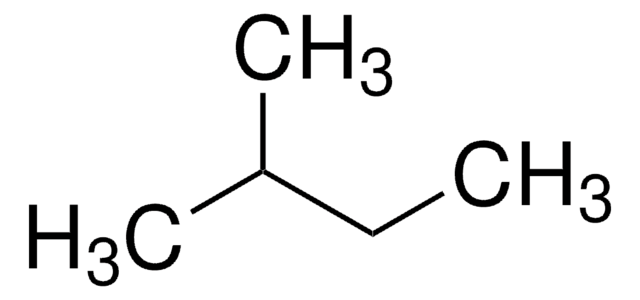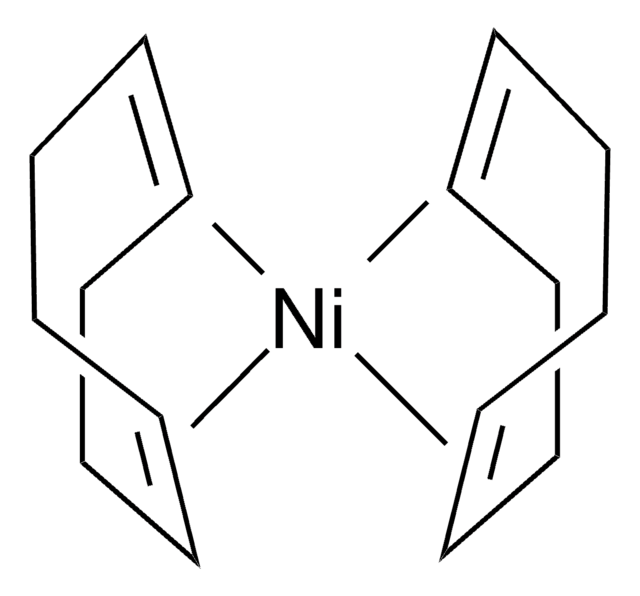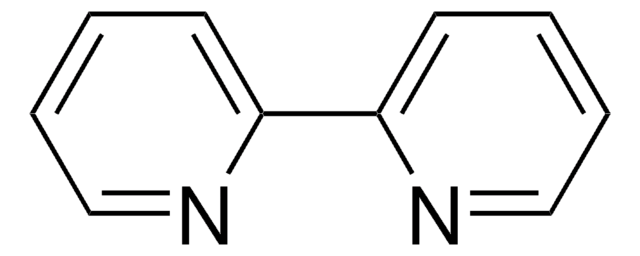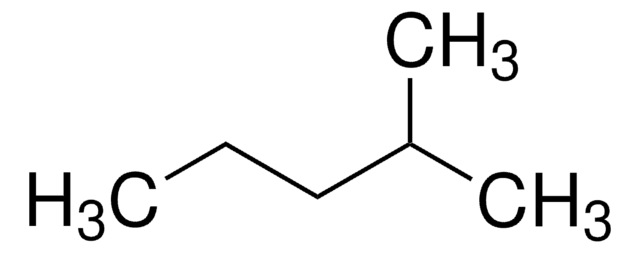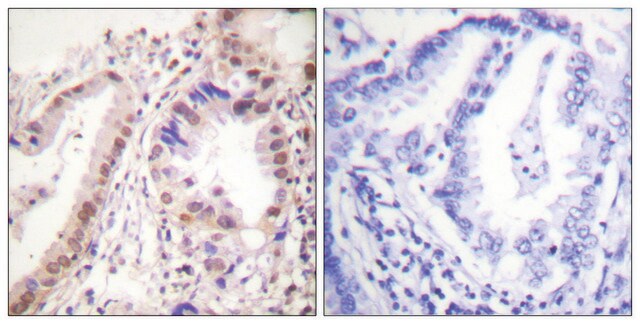M32631
2-Methylbutane
ReagentPlus®, ≥99%
Sinónimos:
Isopentane
About This Item
Productos recomendados
densidad de vapor
2.6 (vs air)
Nivel de calidad
presión de vapor
11.17 psi ( 20 °C)
Línea del producto
ReagentPlus®
Ensayo
≥99%
Formulario
liquid
temp. de autoignición
788 °F
lim. expl.
8.3 %
índice de refracción
n20/D 1.354 (lit.)
bp
30 °C (lit.)
mp
-160 °C
densidad
0.62 g/mL at 25 °C (lit.)
temp. de almacenamiento
2-8°C
cadena SMILES
CCC(C)C
InChI
1S/C5H12/c1-4-5(2)3/h5H,4H2,1-3H3
Clave InChI
QWTDNUCVQCZILF-UHFFFAOYSA-N
¿Está buscando productos similares? Visita Guía de comparación de productos
Categorías relacionadas
Descripción general
Aplicación
- A reactant to synthesize isoprene by a two-stage dehydrogenation process using chromia-alumina catalyst.
- A weakly polar solvent to study the intramolecular charge transfer (ICT) effect and the solvatochromic behavior of the pyrene substituted 1,3,4-oxadiazole derivatives.
Otras notas
Información legal
Palabra de señalización
Danger
Frases de peligro
Consejos de prudencia
Clasificaciones de peligro
Aquatic Chronic 2 - Asp. Tox. 1 - Flam. Liq. 1 - STOT SE 3
Órganos de actuación
Central nervous system
Riesgos supl.
Código de clase de almacenamiento
3 - Flammable liquids
Clase de riesgo para el agua (WGK)
WGK 2
Punto de inflamabilidad (°F)
-59.8 °F - closed cup
Punto de inflamabilidad (°C)
-51 °C - closed cup
Elija entre una de las versiones más recientes:
¿Ya tiene este producto?
Encuentre la documentación para los productos que ha comprado recientemente en la Biblioteca de documentos.
Los clientes también vieron
Nuestro equipo de científicos tiene experiencia en todas las áreas de investigación: Ciencias de la vida, Ciencia de los materiales, Síntesis química, Cromatografía, Analítica y muchas otras.
Póngase en contacto con el Servicio técnico